Manuscript Description London, British Library, MS Harley 3869 | |
| Title: | Confessio Amantis |
| Author: | Gower |
| Contents: | Confessio Amantis with added addenda, Traitie with associated Latin verses; Carmen super multiplici viciorum pestilencia; 'Eneidos Bucolis' plus two Marian lyrics added by a later 15th-century hand to 366v-368r. |
| Language: | English and Latin |
| Date Range: | 1425-1450 |
| Scribal Hands: | Examples of the hand. Click on the link above for full details and images of individual letter forms.        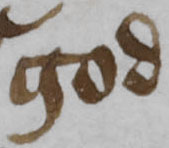 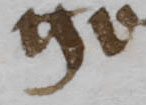  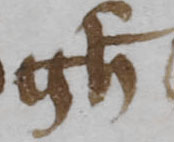 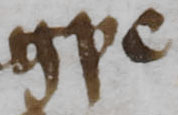  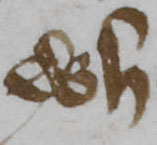 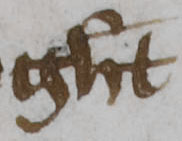 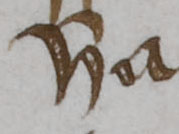 Examples of the hand. Click on the link above for full details and images of individual letter forms.    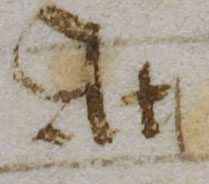   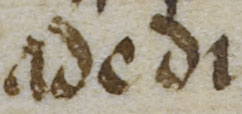 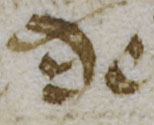 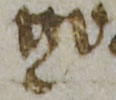  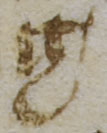 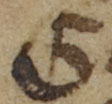  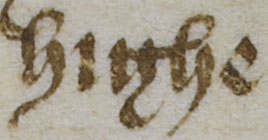 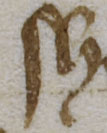 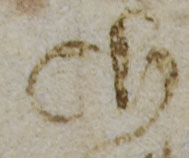 |
| Dialect: | County; Gowerian (literatim copy of Fairfax) |
| Material: | Combination: mixed parchment (outer bifolia) and paper (unicorn head, Briquet 1409) |
| No of Folios: | 1 marbled and one paper flyleaf new with rebinding + 1 parchment flyleaf foliated 1 bound back to front since verso shows stain from fold-over of tanned leather on cover, scribbles on recto + text block of added quire of 4 all parchment missing first leaf and ff5-367 original + paper flyleaf now written on recto by same hand as adds texts to lower half f366v and all of f367r-v, the flyleaf has stained verso + 2 paper and one marbled paper flyleaves new with rebinding. |
| Pagination: | Medieval arabic ink foliation 1-121 in upper outer corners recto of folios now numbered 5-125; modern pencil foliation below and to right of these and continuing through volume, begins f1 on front flyleaf and continues to f368. |
| Quiring: | Varies; 14s and 16s mostly, but 2 x 18. |
| Signatures: | After first quire of 4, ie from f5 onwards, signatures survive in lower right corner each leaf through first half of quires, two sets, contemporary and possibly by same hand, one with a, b, c, etc. plus roman numbers, the other with medieval arabic 1, 2, 3, etc. plus roman numbers; begins 'a' for first quire, eg 'a iiij' on f8; second is b and some romans are red; third gives both '3' and slightly above it 'c' plus one set of romans, and from there onwards the letter set (d) written above the number set (4) each with their own roman numbers. Arabic numbers give digits backward so '18' written '81 occasional crayon signatures as well, eg 'V' and 'viij' on f270. |
| Catchwords: | Not on f4v by Hand 3 (who wrote only ff2-4v and 366v-368); thereafter catchwords by scribe B in usual place at ends of quires, 3-4 words, occasionally (f198v) in a fine rectangle box but usually unembellished. |
| Page Size: | 285 x 190 |
| Frame: | ff1-11, 4 x vertical enclosing text in left column and a narrower column for glosses to the right, varying horizontals sometimes two at top and one bottom, sometimes only one at top, but ruled within; after f11 only one vertical (left side of text column) and top (to which minim height of top line hangs), no ruling at all nor further frame for glosses; fine grey lines; no pricking survives even on ff1-11 where ruled. |
| Writing Space: | 215 x 90 |
| Incipits and Explicits: | On f1 (was originally verso of first flyleaf) has 'Jo Gower / Confessiane / Amantis' in hand of 15-16th cc.; usual Confessio conclusion; other works have rubric headings in Latin or French, no explicits. |
| Marginal Headings: | Marginal glosses and running titles in red with blue paraphs before them. Latin verses integral to the text by scribe in same column with text, begin with blue initial flourished red; Latin glosses, rubric, in right column by scribe and preceded by blue paraph, sometimes don't fit and continue into lower margin under text block (eg f34). |
| Running Titles: | Running titles in red with blue paraphs before them. |
| Borders: | Foliage border down left margin (including brown that may have been silver once?) and spray across bottom margin with opposing tiny green leaves, silver flowers--not London work? amateur?, but looks contemporary. |
| Illuminated Initials: | To begin Prologue on f5 is a 4-line blue and pink initial on gold ground (now more like mustard colour). |
| Miniatures: | Usual two illustrations of the Confessio of Nebuchadnezzar and statue in dream on f5r (top half of leaf) and of Confessor and Lover on f18 at beginning of Book II, top half of leaf. |
| Flourished Initials: | Books introduced by 4- or 6-line blue initials with red flourishing, other divisions of text have 3- or 4-line blue initials with red flourishing; alternating 1-line blue with red and red with blue flourishing; Latin in line with text is written in red with blue 1-line flourished initial to begin. |
| Other Names (not owners): | [From Pearsall] inscriptions ff366-7 re Basil Feilding, second son and heir of Sir William Feilding (d. 1547) of Newnham Paddox in Monk's Kirby, Warwickshire and to his wife Goodith (d. 1580), daughter of William Willington of Barcheston in Warwickshire. Basil was sheriff of Warwickshire 10 Eliz. Their son William was made first Earl of Denbigh in 1622. Owned or passed through hands of John Stow, whose hand writes heading top f2 (Identified by Kipling, 1982, p. 9). Later owner (ff1r, 4v, 357r) Ogilvy with date 1628 on f1, probably Sir George Ogilvy, (aka George Ogilvy of Carnousie) eldest son and heir of Sir Walter Ogilvy (d. 1625), the eldest son and heir of Sir George Ogilvy of Dunlugas (d. 1621). His name also in Tale UL MS 535. |
| Further Information: | Derek Pearsall, Descriptive Catalogue of the Manuscripts of the Works of John Gower, in John Gower Newsletter, vols. XXVII- (2008-), 'Harley 3869', JGN XXVIII, no.1 (2009), 34-45. On p.35 he notes that ff2r-4v (IMEV 2200) and ff366v-368r are written later by a hand of second half of 15th c. onto leaves at front and back of the volume, and this added first quire includes verses on the entry of Queen Margaret into London. On p.36 Pearsall writes of the explicit to Confessio Amantis (f356v) that '[t]he last 4 of the 6 lines, as well as item 4 ['Quam conxere freta' on f357r] are in the more formal hand of the scribe (but possibly in another hand'). Stow attributes to Lydgate but recent scholarship (Kipling) shows not by Lydgate. |


